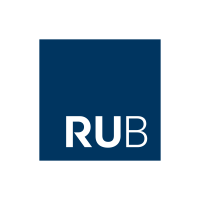A molecular‐level understanding of the effects of atmospheric‐pressure plasma on biological samples requires knowledge of the effects on proteins. Superoxide dismutases, which detoxify superoxide under oxidative stress conditions, play a key role in bacterial plasma resistance. Investigation of the impact of dielectric barrier discharge (DBD) treatment on purified superoxide dismutases SodA and SodB of Escherichia coli showed that DBD treatment caused a rapid protein degradation, with only 8% of protein remaining after 10 min. The affinity of SodA for the metal cofactor Mn2+ was reduced. Mass spectrometry, in conjunction with coupled‐cluster calculations, revealed that modifications of amino acid residues in the active site can explain the decreased metal affinity and a distortion of the coordination geometry responsible for the activity loss.
| Field | Value |
|---|---|
| Publisher | |
| Authors | |
| Release Date | 2020-07-09 |
| Identifier | 2a74a58b-0d0f-40ed-a02b-3071d91c6cb8 |
| Permanent Identifier (URI) | |
| Is supplementing | |
| Plasma Source Name | |
| Plasma Source Application | |
| Plasma Source Specification | |
| Plasma Source Properties | V(RMS) = 13.5 kV, trigger frequency = 300 Hz, diameter=20 mm |
| Language | English (United States) |
| Plasma Source Procedure | Aqueous sample of 40 μl on stainless steel support placed on grounded support. Distance between sample and DBD was 1 mm. |
| License | |
| Plasma Medium Name | |
| Plasma Medium Properties | room temperature. no further control. |
| Plasma Target Name | |
| Contact Name | Bandow, Julia E. |
| Plasma Target Properties | purified superoxide dismutase.
Escherichia coli BW25113, either ∆sodA, ∆sodB, ∆sodC, or ∆sodA∆sodB, taken from KEIO collection.
40 μl sample |
| Contact Email | |
| Public Access Level | Public |
| Funding Agency | |
| Project | |
| Subproject |
Data and Resources
- 01a SOD capacity of E.colicsv
One hundred micrograms of soluble protein extract of exponentially growing...
Preview Download - 01b Bacterial growth with paraquatcsv
Paraquat sensitivity of SOD‐deletion strains was determined in growth...
Preview Download - 01c Bacterial plasma sensitivitycsv
Plasma sensitivity of SOD‐deletion strains was determined in survival assays...
Preview Download - 02b Residual protein activity after plasma treatmentcsv
The activity of residual SodA and SodB (relative specific activity) was...
Preview Download - 02c Protein carbonylation after plasma treatmentcsv
2,4‐dinitrophenylhydrazine (DNPH), which reacts with carbonyl groups, was...
Preview Download - 03 Estimation of plasma-generated peroxynitritecsv
A maximal estimate of peroxynitrite in plasma‐ treated buffer was calculated...
Preview Download - 05a Raw tryptophan fluorescence of SodA for Mn-reconstitutioncsv
After removal of the manganese cofactor from untreated or plasma‐treated...
Preview Download - S2a SOD-mimicking activity of plasma- treated buffercsv
The buffer (potassium phosphate, 100 mM, pH 7.5) was treated with the DBD...
Preview Download - S2b SOD-mimicking activity of ROS in the enzyme assaycsv
Concentration-dependent activity of different long-living reactive species...
Preview Download - S2c generation of Hydrogen peroxide by plasmacsv
Generation of hydrogen peroxide in buffer treated with DBD plasma as a...
Preview Download - S2d Influence of catalase KatE on the activity of plasma-treated buffercsv
SOD-mimicking activity of plasma-treated buffer (10 min plasma treatment)...
Preview Download - S3 Absorption spectra of NBT and NADH with or without plasma-treated buffer (PTB)csv
Absorption spectra of SOD assay solutions after 10 min pre-incubation and...
Preview Download - 02a Protein concentration after plasma treatmentcsv
Protein concentration after plasma treatment was determined by the Bradford...
Preview Download - S4a Influence of manganese ions on SOD activity assaycsv
Manganese salts (100 μM), untreated SodA, or plasma-treated SodA (10 min)...
Preview Download - S4b Influence of iron ions on the SOD activity assaycsv
To determine the influence of free iron ions on the SOD activity assay, the...
Preview Download - S5 CD spectroscopy of SodAcsv
CD spectroscopy of SodA after different durations of plasma treatment. CD...
Preview Download


![[Open Data]](https://assets.okfn.org/images/ok_buttons/od_80x15_blue.png)